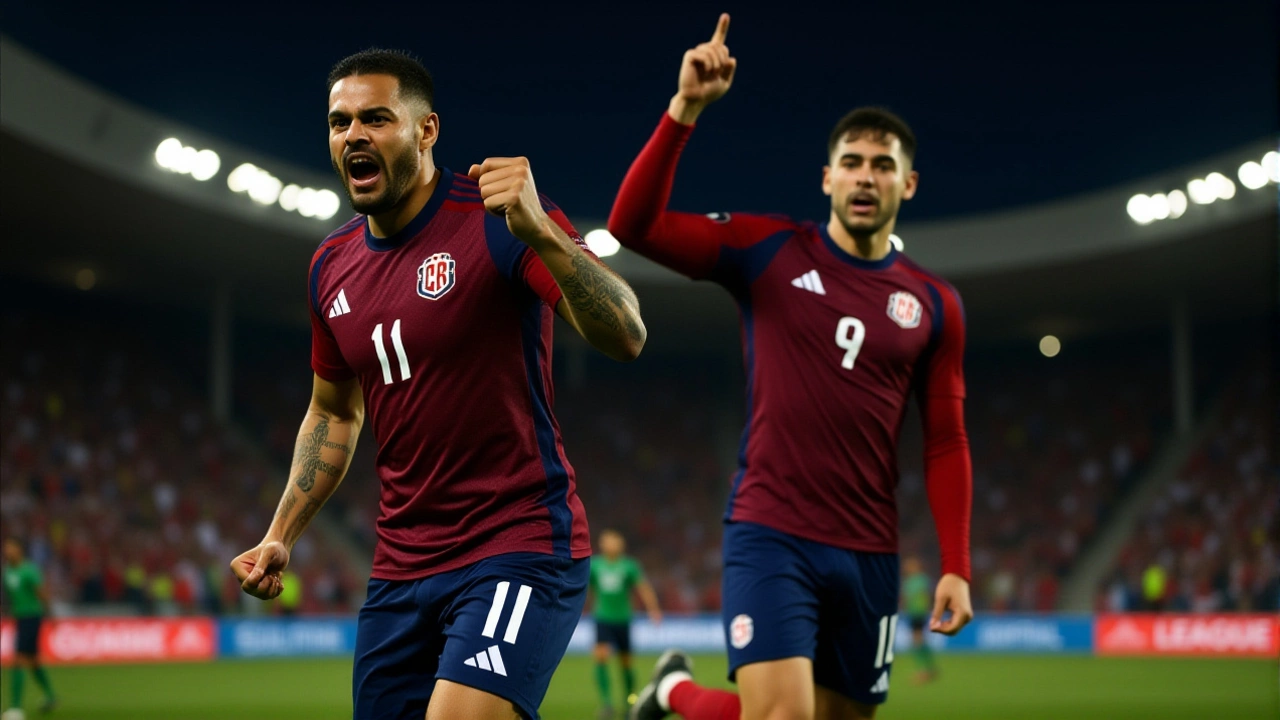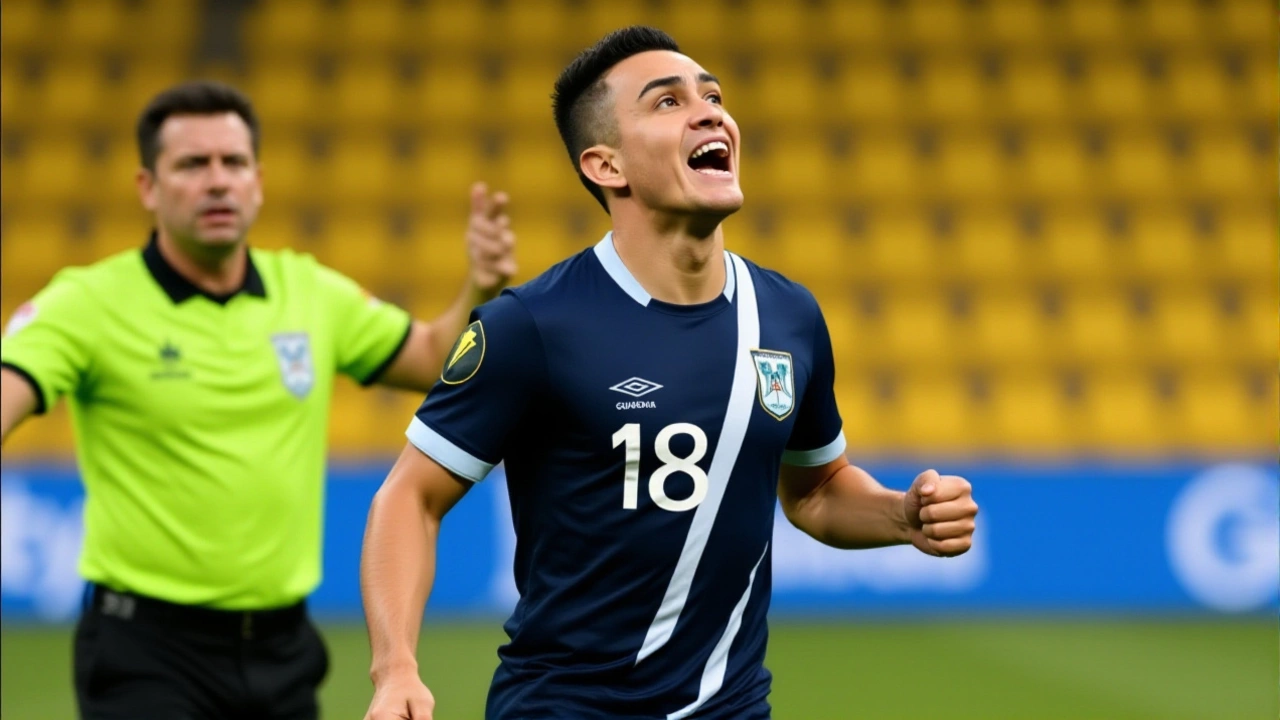Guatemala ended its 2026 FIFA World Cup qualifying campaign with a spirited 3-1 victory over Suriname on Wednesday, November 19, 2025, at Estadio Manuel Felipe Carrera in Guatemala City. The win, sealed by goals from Darwin Lom, Olger Escobar, and Óscar Santis, was more than just a morale boost—it was the final chapter in a campaign that came agonizingly close to historic progress. Suriname, meanwhile, had entered the match undefeated in Group A, but the result didn’t change their fate: they’d already secured second place. For Guatemala, it was about pride, momentum, and proving they belong in the conversation.
What Was at Stake?
Before kickoff, Suriname sat atop Group A with 9 points from five matches—two wins, three draws, no losses. Their +5 goal difference had them narrowly ahead of Panama, who also had 9 points but a +2 goal difference. The top two teams advanced to the next round of CONCACAF qualifying. Guatemala, with 5 points from one win, two draws, and two losses, had been mathematically eliminated for weeks. Their only remaining goal: finish strong.
It wasn’t just about pride. The match was a chance to send a message to the region. After a 1-1 draw with Suriname on October 10, 2025, many questioned whether Guatemala could break through against the underdogs who’d defied expectations. The answer came in the second half.
The Goals That Changed the Narrative
The first 45 minutes were cagey. Both teams felt the weight of the occasion, but neither could find the breakthrough. The halftime whistle blew on a 0-0 stalemate. Then, in the 49th minute, everything shifted.
Darwin Lom, Guatemala’s talismanic forward, pounced on a loose ball after a scramble in the box. His low, driven shot slipped past the Surinamese keeper—1-0. The crowd at Estadio Manuel Felipe Carrera erupted. It was Lom’s third goal in the qualifying campaign, and he was becoming the heartbeat of the team.
Eight minutes later, Olger Escobar made it 2-0. A precise through ball from the right flank found him in space. He didn’t hesitate—first touch, then a curling finish into the far corner. The assistant referee raised his flag, but the goal stood. Replays showed Escobar was barely onside, but the decision was final.
By the 65th minute, the game was effectively over. Óscar Santis, a 22-year-old attacking midfielder making his first start in qualifying, received a pass near the edge of the box, feinted left, then slotted the ball past the keeper with his right foot. The crowd chanted his name. "¡Santis, Santis!" they roared. The goal was his first for the national team.
Suriname, desperate to salvage something, pushed forward. In the 93rd minute, their own player, Nicolás Samayoa, accidentally diverted a cross into his net. The scoreboard read 3-1. It was a cruel twist, but it didn’t alter the outcome. Suriname had already done enough.

Who Advanced? And Why Guatemala Didn’t
Suriname finished second in Group A with 9 points and a +5 goal difference. Panama, despite having the same win-draw-loss record, finished first with +2. The difference? Goal difference. It was the same story as the 2022 cycle: small margins decide everything.
Guatemala’s +1 goal difference over El Salvador was enough to secure third place. But third meant elimination. The group’s structure—four teams, six matchdays—was brutal. Only two spots existed. And while Guatemala had beaten Suriname twice in the last two meetings (including this one), they’d also lost to Panama and drawn with El Salvador at home. Inconsistent defense killed them.
"We played better than our record shows," said head coach Manuel Keosseián after the match. "We had chances in the first three games. We didn’t convert. That’s what separates teams that go forward and those that don’t. We’ll learn. We’ll come back stronger."
What This Means for the Future
Suriname’s run was one of the biggest surprises in CONCACAF qualifying history. A team that hadn’t reached the final round since 1996 had now made it to the third round—and stayed unbeaten. Their squad, built around players from the Dutch Eredivisie and the Surinamese diaspora, showed discipline and tactical intelligence. They’ll now face the top teams from the Caribbean and Central America in the next round, likely including the United States, Mexico, or Canada.
For Guatemala, the next step is rebuilding. Their best players—Lom, Escobar, Santis—are young. The core of this team will be 24 to 26 years old by the next qualifying cycle in 2030. The federation must address defensive frailties, especially in high-pressure situations. They also need more depth in midfield.
And while the stadium was packed, the atmosphere electric, the real challenge lies beyond the pitch: funding, youth development, and consistency in coaching. Guatemala has the passion. Now it needs the structure.

Final Group A Standings (2026 FIFA World Cup Qualifiers)
- Panama — 5 matches, 2 wins, 3 draws, 0 losses, +2 GD, 9 points
- Suriname — 5 matches, 2 wins, 3 draws, 0 losses, +5 GD, 9 points
- Guatemala — 5 matches, 1 win, 2 draws, 2 losses, -1 GD, 5 points
- El Salvador — 5 matches, 1 win, 0 draws, 4 losses, -6 GD, 3 points
Frequently Asked Questions
Why did Suriname advance over Panama despite having the same points?
CONCACAF uses goal difference as the first tiebreaker after points. Suriname finished with a +5 goal difference, while Panama had +2. Even though both teams had identical win-draw-loss records (2-3-0), Suriname’s superior scoring and defensive consistency—especially in draws against stronger opponents—gave them the edge. They scored 8 goals and conceded only 3, while Panama scored 7 and conceded 5.
How did Guatemala’s performance compare to previous qualifying cycles?
Guatemala’s 5 points in this cycle matched their total from the 2022 qualifiers, but this time they were more competitive. In 2022, they lost 4-0 to the U.S. and 2-0 to Jamaica. This cycle, they held Suriname to a draw and nearly beat Panama. The emergence of young talents like Escobar and Santis signals improvement. Still, they’ve never advanced past the third round in modern World Cup qualifying.
Who scored the goals for Guatemala, and why are they significant?
Darwin Lom (49'), Olger Escobar (57'), and Óscar Santis (65') all scored. Lom, 25, is Guatemala’s most consistent forward and has now netted 5 goals in the last two qualifying cycles. Escobar, 21, is a rising star from the Guatemalan league who earned his first international goal. Santis, also 22, made his debut in this campaign and showed poise beyond his years. Their goals mark a generational shift—this team is no longer reliant on aging veterans.
What’s next for Suriname after this match?
Suriname advances to the fourth round of CONCACAF qualifying, where they’ll face the top teams from the Caribbean and Central America in a group stage format. Their opponents could include Jamaica, Honduras, or even the United States. Their path to the 2026 World Cup is steep, but their unbeaten run has proven they can compete. The next round begins in March 2026, giving them four months to prepare.
Why is Estadio Manuel Felipe Carrera also called El Trébol?
The stadium, located in the San Juan de Dios neighborhood of Guatemala City, is officially named after former football administrator Manuel Felipe Carrera. But locals have called it "El Trébol" (The Clover) since the 1980s because of the clover-shaped design of its original seating layout. The nickname persists in local media and fan chants, even though official documents and FIFA use the full name.
Did any players get suspended after the match?
No suspensions were issued. The match was clean, with only two yellow cards total—one for Suriname’s J. Lonwijk in the 78th minute and one for Guatemala’s Luis Fernando Tenna in the 82nd. CONCACAF’s match report confirmed no red cards or serious fouls. Suriname’s coach praised the discipline of his team, noting they avoided retaliation despite the late own goal.

Maxwell Radford
I'm Maxwell Radford, a passionate news analyst living in Australia. My area of expertise includes business, general news, and arts, and I take immense pleasure in delivering deep insights about these subjects to my readers. I have worked with different media outlets enhancing my knowledge and honing my writing skills. Capturing the nuances of finance and the creative world in my writings is what I strive for.